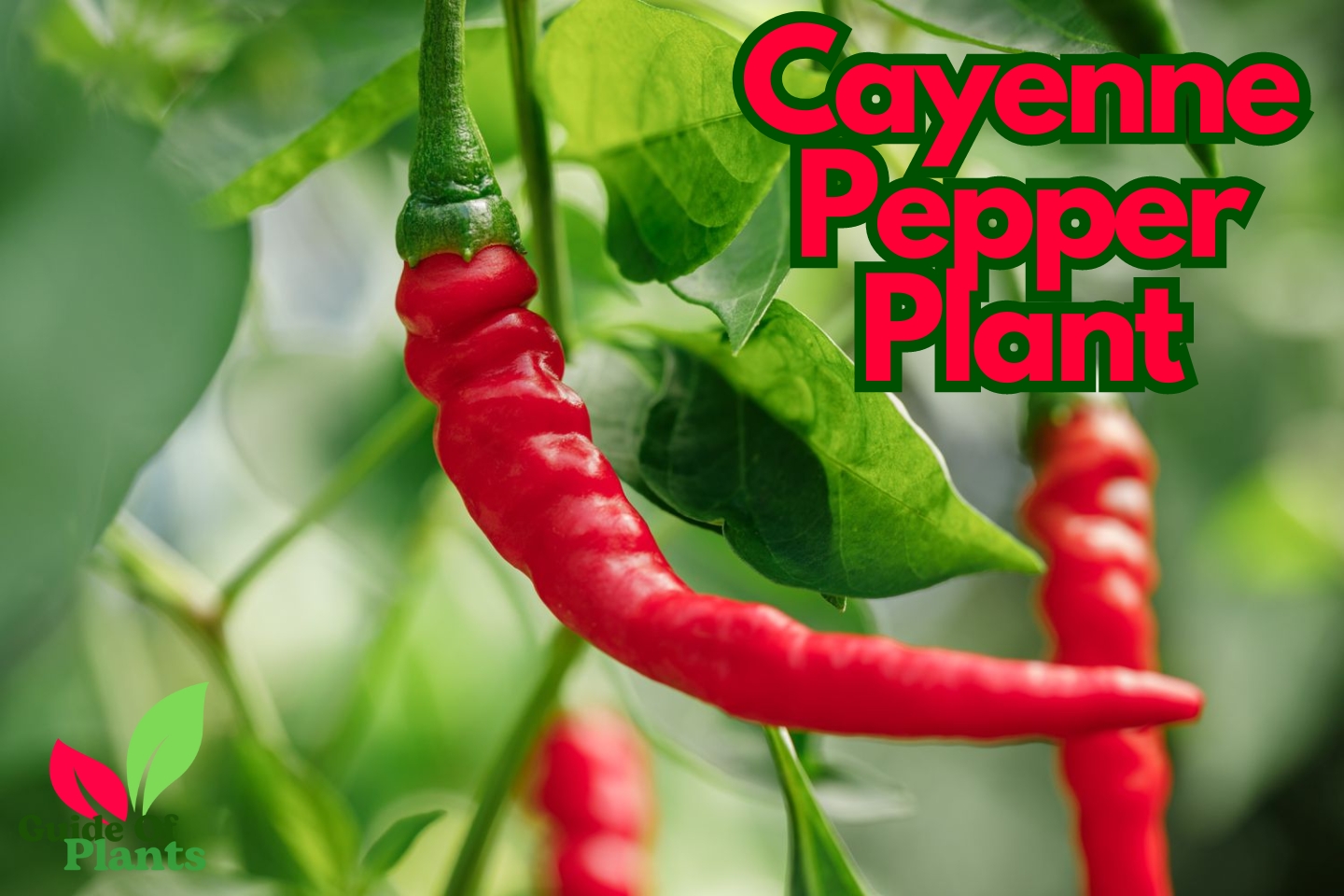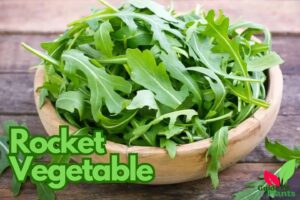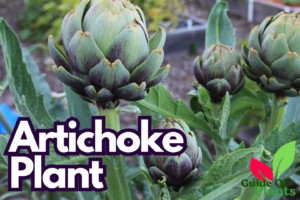For those who love spicy foods, growing cayenne pepper plants can be a fun and rewarding gardening endeavor. The cayenne pepper plant produces skinny, red-orange pods that pack a powerful spicy punch. Cayenne peppers add vibrant heat and captivating flavor to dishes, along with an array of health benefits.
Table of Contents
Overview of the Cayenne Pepper Plant Species
Cayenne peppers belong to the plant species Capsicum annuum, in the nightshade family Solanaceae. There are many cultivars of cayenne pepper, which form slender, curved, or straight pods in vivid red, orange, yellow or purple hues. Most cayenne varieties have long, wrinkled fruits that taper to a point. They tend to be very pungent but also have a fruity, smoky flavor.

Origins and History of Cayenne Peppers
The origins of the cayenne pepper trace back thousands of years to Central and South America. Cayenne varieties take their name from the capital city of French Guiana, a region where peppers were actively cultivated. From the 1500s onward, cayenne peppers spread across the world along early trade routes. They became an integral ingredient in spicy cuisines globally.
Also Know About: 7 Amazing Health Benefits of Bottle Gourd That Will Blow Your Mind
Health Benefits of Cayenne Peppers
In addition to tantalizing taste, cayenne peppers confer many potential health benefits. They contain antioxidants like vitamin C and vitamin A. The primary bioactive compound capsaicin has anti-inflammatory and pain-relieving properties. Studies suggest cayenne peppers may aid metabolism, heart health, and blood pressure as part of a balanced diet.
The Cayenne Pepper Plant Growing Process
Getting your own cayenne pepper plants started is simple with proper care. These tropical perennials can be grown from seeds either indoors or directly outside. With warming weather, germinated seeds will grow quickly given adequate sunlight, water and nutrients.
Cayenne Pepper Seed Germination
The first step is successful cayenne pepper seed germination. Cayenne seeds need warm conditions to sprout. Start by soaking seeds in water overnight before planting. Use seed starter mix and plant 1⁄4 inch deep in seed trays or pots. Cover trays with plastic wrap and keep the soil moist and warm, around 80°F. This encourages rapid, uniform sprouting in about 10-14 days. Remove the plastic once sprouts emerge.
Ideal Conditions for Germinating Cayenne Pepper Seeds
Cayenne pepper seeds require specific conditions for the highest and fastest germination rates. The ideal environment includes a soil temperature of 80-90°F and a growing medium with a pH between 6.0-7.0. Keep seeds consistently moist but not soaked. Bottom heat, heating mats or grow lights can create warmth. And be sure to pre-soak seeds prior to planting.

Starting Cayenne Pepper Seeds Indoors
Getting a head start on the growing season by sowing cayenne seeds indoors 6-8 weeks before your last expected frost date. Use a seed starting mix in containers or trays under grow lights or sunny windows. Gently water daily to keep moist until sprouts emerge. Then reduce watering but avoid letting soil dry out completely.
Also Know About: Organic Vegetable Gardening 101, From Seed to Plate
Transferring Cayenne Pepper Seedlings Outdoors
Once cayenne pepper seedlings have 3-4 true leaves, harden them off for 7-10 days by setting them outside temporarily to transition to outdoor conditions. Transplant seedlings 18-24 inches apart in garden beds with nutrient-rich, well-draining soil after all danger of frost has passed. Water deeply after transplanting.
Growing Cayenne Peppers in Containers
You can also grow cayenne pepper plants in containers on patios, porches or balconies. Use at least a 5 gallon pot with drainage holes, quality potting mix and a warm, sunny location. Water when the top inch becomes dry and feed with diluted liquid fertilizer. Container plants may need staking as they grow taller.
Cayenne Pepper Plant Care
With attention to their basic needs, cayenne pepper plants will thrive in garden beds or containers. Optimal sun, soil, water and nutrients keeps them growing vigorously.
Sun and Soil Requirements
Cayenne pepper plants need at least 6-8 hours of direct sunlight daily. In terms of soil, they prefer nutrient-rich, well-draining soil with a pH of 6.0-7.0. Amend native soil with compost or manure to improve fertility and drainage. Raised garden beds also provide ideal growing conditions.
Watering Cayenne Pepper Plants Properly
Consistent moisture is key, especially when plants are young. Water cayenne pepper plants at the base, avoiding wet leaves, whenever the top 1-2 inches of soil become dry. Established plants are fairly drought-tolerant but regular water produces the best yields. Harvests may be reduced if plants experience wilting due to inadequate water.
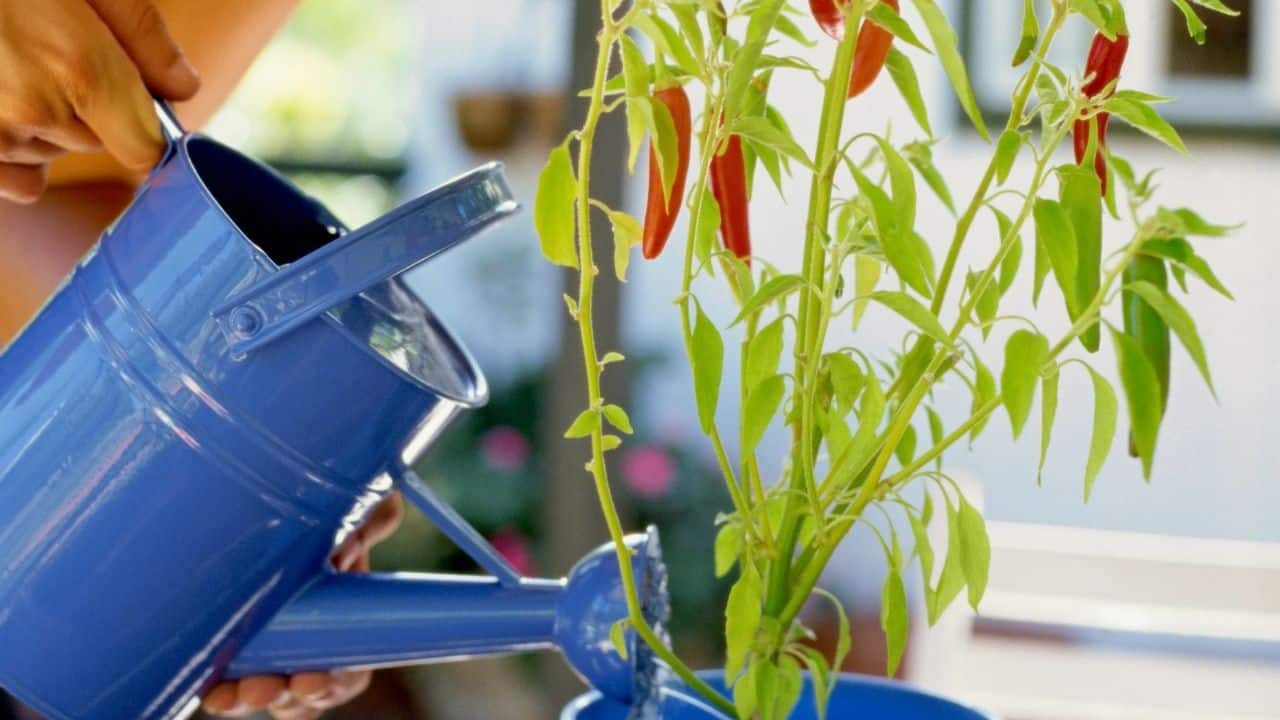
Fertilizing Cayenne Peppers for Optimal Growth
Using a balanced organic fertilizer every 2-3 weeks after transplanting will nourish cayenne pepper plants for vigorous growth. Fish emulsion, compost tea, or manure teas make excellent organic options. Discontinue fertilizer as plants start flowering and fruiting to focus energy on pods.
Caring for Container Grown Cayenne Pepper Plants
Container cayenne plants need more frequent watering and fertilizer since they have limited root space. Let containers dry out somewhat between waterings, then soak thoroughly. Feed container cayenne peppers weekly with a diluted liquid fertilizer like fish emulsion or seaweed extract. Support plants with cages or stakes as they grow.
Pruning Your Cayenne Pepper Plants
Pruning cayenne pepper plants encourages bushier growth and higher yields. Pinch or trim back new growth when plants are 12-18 inches tall. Remove the first flowers to promote branching early on. Mid-season, prune to open up crowded centers and improve air circulation and light exposure.
Also Know About: Okra Plants, for Your Vegetable Garden
Pests and Diseases Affecting Cayenne Peppers
Cayenne peppers are susceptible to some common garden pests and fungal diseases. Being aware of potential issues allows prompt action to treat problems before major damage occurs.
Common Insect Pests of Cayenne Pepper Plants
Aphids, cabbage loopers, flea beetles, hornworms, pepper weevils and whiteflies may infest cayenne pepper plants. They damage foliage, spread diseases and reduce yields. Identify pests early and use organic controls like insecticidal soap, neem oil or beneficial insects.
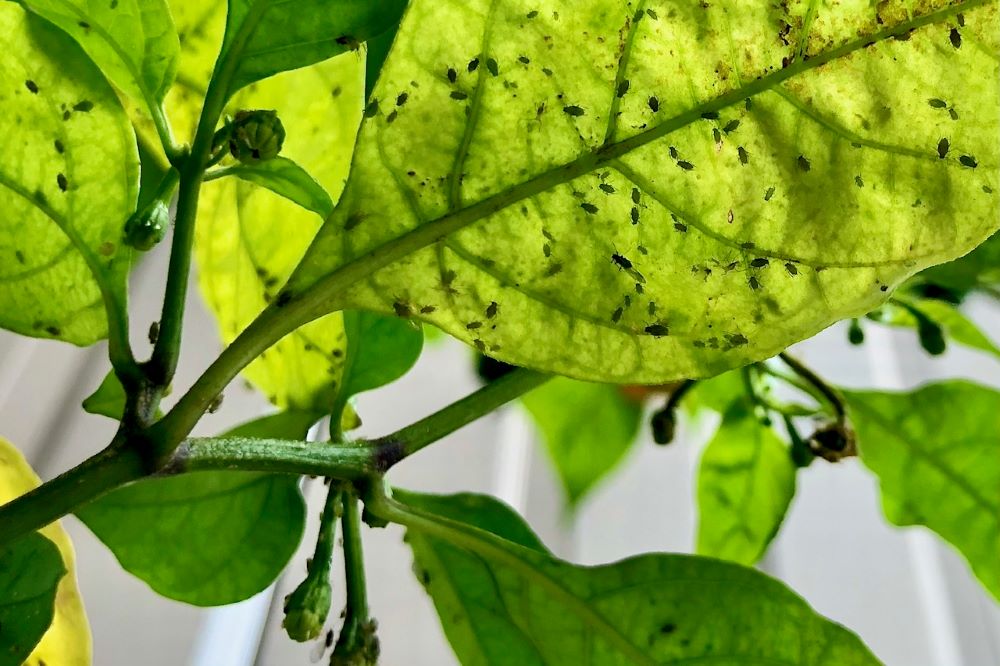
Diseases Impacting Cayenne Pepper Growth
Damping off, blossom end rot, powdery mildew, gray mold and anthracnose are among diseases that can trouble cayenne pepper plants. Improve airflow and avoid overhead watering to reduce disease. Remove affected plants or plant parts promptly.
Organic Pest and Disease Control for Cayenne Peppers
Organic measures can treat most pest and disease issues for cayenne pepper plants. Practice crop rotation and remove debris after harvest. Improve air circulation between plants and water early at the base of plants. Apply neem oil or insecticidal soap sprays as preventatives. Introduce ladybugs, lacewings or other beneficials to handle pest outbreaks organically.
When and How to Harvest Cayenne Peppers
With proper care, you can enjoy multiple harvests of delicious cayenne peppers during the growing season. Be patient for fruits to fully ripen for the best flavor and heat.
Identifying Peak Ripeness in Cayenne Peppers
Cayenne peppers are generally ready to pick 60-85 days after transplanting. Look for smooth, firm pods that are at least 3-4 inches long. Fruits should be completely red or orange with thin walls and crisp texture. Ripe cayennes will hang downwards on the stems. Use hand pruners or scissors for clean harvesting.
Handling Spicy Cayenne Pepper Plants
Cayenne pepper sap contains the irritant capsaicin. Wear gloves and avoid touching your face when handling harvested peppers until after washing hands thoroughly with soap and water. Avoid breathing in airborne oils.
Storage and Preservation of Cayenne Pepper Harvests
Enjoy fresh-picked cayennes immediately, or preserve the bountiful harvest to savor year-round. Proper storage and putting up peppers extends their shelf life significantly.

Enjoying Your Cayenne Pepper Bounty
With an abundant harvest of cayenne peppers, there are countless options for enjoying their intense spicy flavor. From salsas to spice rubs, hot sauces and more, cayenne peppers add excitement to recipes.
Cayenne Pepper Cooking Tips and Recipes
When preparing recipes with cayennes, use care when handling and cutting fresh peppers. Remove ribs and seeds first to control heat levels. Cayennes pair well with other bold flavors like garlic, onion and lime juice. Add them cooked or raw to salsas, pasta sauces, chili and soups for extra spice. Use dried, ground cayenne to season meat, egg dishes, curries and stir fries.
Crafts Using Cayenne Peppers from Your Garden
The beautiful colors and ornamental appeal of cayenne peppers offer creative possibilities for crafts. String vibrant peppers into garden garlands or ristras to display indoors. Preserve peppers via pickling or drying for longer-term craft projects and décor.
Overwintering Cayenne Pepper Plants
In suitable climates, cayenne pepper plants can be overwintered and reused the next season. With some preparation and care, you can get an early start the following spring.
Getting Cayenne Pepper Plants Ready for Winter
As temperatures cool, prune plants back by one-third to one-half before bringing inside. Check for pests and only move clean plants. Transplant into a container barely larger than the root ball. Gradually transition inside and place in a sunny window.
Caring for Overwintered Container Cayenne Plants
Keep overwintered cayenne pepper plants in a warm spot with southern sun exposure. Water sparingly, allowing the soil to partially dry out between watering. Fertilize monthly at half strength. Ensure plants receive adequate sunlight and ventilation. Rotate containers periodically for even growth.
Re-growing Cayenne Peppers from Stored Harvests
Did you know you can grow new cayenne pepper plants from the seeds inside dried peppers? The next season, soak dried peppers to extract seeds. Start seeds and grow as usual. This propagates treasured heirloom varieties year after year.
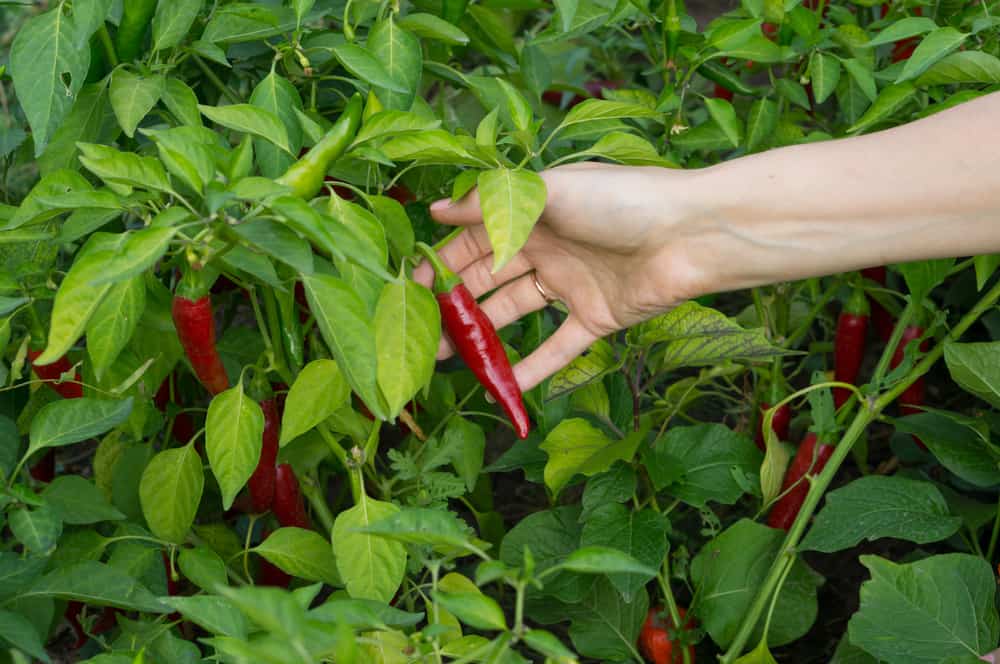
Also Know About: Ornamental Peppers
Conclusion
For spice lovers, growing cayenne pepper plants is tremendously rewarding. Their electrifying color and flavor invigorate gardens and recipes. With proper care, cayenne peppers yield abundantly, providing an ongoing harvest of gorgeous, piquant fruits. Discover firsthand the thrill of nurturing your own cayenne pepper plants.
Cayenne pepper plant grows in the home garden with attention to sun, soil, moisture and nutrients. Start seeds indoors, transplant out after frost danger passes and grow in beds or containers. Harvest peppers at peak ripeness and enjoy fresh, frozen or dried. With basic best practices, you’ll be harvesting bucketful of vibrant, flavorful cayenne peppers. Let your taste buds tingle with delight at the fruits of your own cayenne pepper plants. (Guide of Plants)

